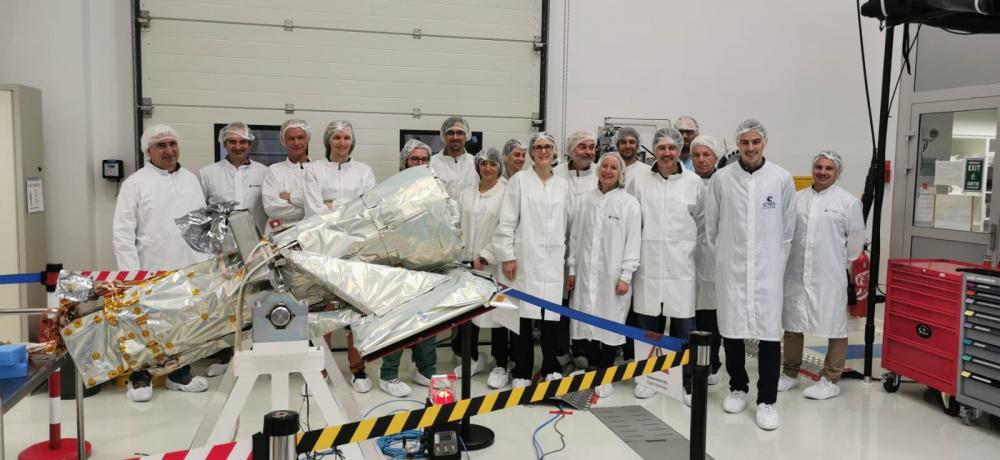The French teams of the ECLAIRs and MXT telescopes, instruments at the heart of the SVOM mission, experienced an important moment during March 2022. First, a general review of the two projects took place at CNES in Toulouse in front of a group of experts. This review allowed to verify that the two instruments meet the technical specifications and will be able to carry out the scientific mission. Then a series of team visits took place in the two CNES clean rooms housing the flight models of the two instruments, ECLAIRs and MXT.

The actors of these two achievements, coming from CNES, CEA and CNRS and belonging to the various trades of the project could appreciate together the result of years. From left to right, a global view of the MXT telescope, a zoom on its focusing optics, the detection plan of ECLAIRs, the telescope being scrutinized and surrounded by the teams.
The journey of ECLAIRs and MXT is far from over. The telescopes will now be shipped to China. They will then be integrated into the satellite's platform where they will undergo a battery of tests before the launch, scheduled for mid-2023.
The SVOM mission
The French-Chinese space mission SVOM (Space-based multi-band astronomical Variable Objects Monitor) is dedicated to the location and study of the most distant explosions of stars, the gamma-ray bursts. These cataclysms, which are signaled by a brief flash of gamma rays, the most energetic form of light, accompany the death of the largest stars. Visible to the farthest reaches of the Universe, these explosions offer the only way to observe the fate of the very first stars in the Universe and to probe the very edges of the cosmos. SVOM will be launched in June 2023 by the Chinese Long March 2C launch vehicle from the Xichang launch base. The mission is the result of a collaboration between the two national space agencies, CNSA (China National Space Administration) and CNES (Centre National d'Etudes Spatiales), with major contributions from CEA and the Institut de Recherche en Astrophysique et Planétologie (IRAP; CNRS/Université Toulouse III - Paul Sabatier) for France, and the National Astronomical Observatory (NAO) and the Institute of High Energy Physics of Beijing (IHEP) for China. The SVOM mission is planned for an initial duration of three years. After the 2018 launch of the CFOSat satellite, dedicated to the study of the oceans, SVOM is the second scientific space mission resulting from a Franco-Chinese collaboration.
• Structure and evolution of the Universe › High energy cosmic phenomena and astroparticles
• Department of Astrophysics (DAp) // UMR AIM • The Electronics, Detectors and Computing Division • The Systems Engineering Division
• High Energy Cosmic Phenomena • Science and Space Instruments Interface
• SVOM • SVOM-ECLAIRS




